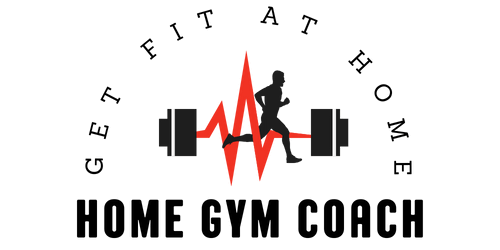So you’ve set up your very own home gym and now you’re eager to start creating a workout routine that’s tailor-made for you. Whether you’re an experienced fitness enthusiast or just starting out, designing an effective and balanced workout plan can seem like a daunting task. But fear not! In this article, we’ll guide you through the process of creating a workout routine that suits your goals, fits your schedule, and utilizes the equipment you have in your home gym. Get ready to embark on a fitness journey that will leave you feeling stronger, healthier, and more confident than ever before.

Assess Your Goals and Fitness Level
Identify your fitness goals
Before starting a workout routine, it’s important to clearly identify your fitness goals. Do you want to lose weight, build strength, improve endurance, or enhance flexibility? Understanding your goals will help shape the type of exercises and equipment you incorporate into your routine.
Evaluate your current fitness level
Assessing your current fitness level will provide a baseline from which to measure your progress. Consider factors such as cardiovascular endurance, muscular strength, flexibility, and body composition. This self-evaluation can be done through various tests or by seeking professional guidance.
Consider any health restrictions or limitations
Take into account any health restrictions or limitations you may have. If you have a pre-existing medical condition or are recovering from an injury, it’s important to consult with a healthcare professional before starting a workout routine. They can provide guidance on exercises that are safe and appropriate for your individual circumstances.
Designing Your Home Gym Space
Allocate an area for your home gym
Designate a specific area in your home for your gym space. It could be a spare room, a section of a room, or even an outdoor area if weather permits. Having a dedicated space will make it easier to stay focused and motivated during your workouts.
Consider the available equipment
Take stock of the equipment you already have or plan to invest in for your home gym. This could include cardio machines like treadmills or stationary bikes, strength training equipment like dumbbells or resistance bands, and accessories like yoga mats or stability balls. Consider your fitness goals and the exercises you enjoy when selecting equipment.
Optimize the layout for convenience and safety
Arrange your equipment in a way that maximizes convenience and safety. Ensure there is enough space between equipment to prevent accidents or injuries. Consider factors such as lighting, ventilation, and accessibility to water. Additionally, incorporating mirrors into your gym space can help you maintain proper form during exercises.

Choosing the Right Equipment
Assess your fitness goals and needs
When choosing equipment for your home gym, consider your fitness goals and individual needs. If weight loss is a priority, cardiovascular equipment like a treadmill or elliptical machine might be beneficial. On the other hand, if building strength is your main focus, investing in weights or resistance bands would be more suited to your goals.
Determine your budget
Establishing a budget for your home gym equipment is important as prices can vary significantly. Consider the quality and durability of the equipment you are looking to purchase, as well as any ongoing maintenance costs. It’s also worth exploring second-hand options or affordable alternatives to stay within your budget.
Select equipment for cardiovascular exercises
Cardiovascular exercises are essential for improving heart health and burning calories. Consider equipment like treadmills, stationary bikes, or rowing machines. These can provide varied options for cardiovascular workouts, allowing you to choose the one that suits your preferences and fitness level.
Choose equipment for strength training
Strength training helps increase muscle strength, improve bone density, and boost metabolism. Look for equipment such as dumbbells, barbells, resistance bands, or weight machines. Choose weights or resistance levels that challenge you without compromising proper form.
Consider additional accessories and tools
In addition to core equipment, consider incorporating accessories and tools that can enhance your workouts. This might include yoga mats, stability balls, balance trainers, foam rollers, or bands for stretching and mobility exercises. These accessories can add variety and target different muscle groups in your routine.
Structuring Your Workout Routine
Determine the frequency of your workouts
To create a workout routine, decide how many days a week you will exercise. Consider your fitness level, availability, and other commitments. Aim for consistency, but be realistic about what you can realistically maintain. Starting with three to five workout days per week is a good baseline.
Decide on the duration of each workout session
Determine how long each workout session will be. This can vary depending on your fitness goals, availability, and preferences. Start with a duration that feels manageable and gradually increase it as your fitness level improves. Aim for at least 30 minutes of exercise per session.
Plan your warm-up and cool-down activities
Before starting your workout, it’s important to warm up your muscles and prepare your body for the exercises ahead. Incorporate dynamic stretches, light cardio, or mobility exercises into your warm-up routine. Similarly, include static stretches and gentle movements in your cool-down to aid in muscle recovery and prevent soreness.
Create a balanced routine targeting different muscle groups
Design a workout routine that targets different muscle groups to ensure overall strength and balance. Include exercises for the upper body, lower body, and core. This can include exercises like push-ups, squats, lunges, shoulder presses, planks, and kettlebell swings. Aim for a mix of compound exercises that work multiple muscle groups at once and isolation exercises that focus on specific muscles.
Include both cardiovascular and strength training exercises
Incorporating both cardiovascular and strength training exercises into your routine is important for overall fitness. This combination allows you to target different aspects of your fitness goals. Alternate between days dedicated to cardio workouts and days focusing on strength training to achieve a balanced routine.
Incorporate flexibility and mobility exercises
Flexibility and mobility exercises are often overlooked but play a crucial role in preventing injuries and improving range of motion. Include exercises like yoga, Pilates, or dynamic stretching to improve flexibility and maintain joint mobility. These exercises can also help with relaxation and stress reduction.
Consider varying intensity levels and interval training
To challenge your body and make progress, consider incorporating varying intensity levels into your workouts. Interval training, which alternates bursts of high-intensity exercise with periods of rest or lower intensity, can be an effective way to boost cardiovascular fitness and burn calories. Experiment with different intervals and intensity levels to find what works best for you.
Allow for rest and recovery days
Rest and recovery days are just as important as workout days. They give your body time to repair and strengthen, reducing the risk of injury and preventing burnout. Schedule regular rest days throughout your week to allow your body to recover and adapt to the demands of your workouts.

Setting Realistic and Achievable Goals
Set specific, measurable, and time-bound goals
When setting goals for your workout routine, make them specific, measurable, and time-bound. Instead of a vague goal like “get in shape,” aim to run a mile in under a certain time or increase your weightlifting capacity by a specific amount in a set number of weeks. These goals are easier to track and help keep you focused.
Break your goals down into smaller milestones
Breaking your goals down into smaller, manageable milestones can make them feel more attainable. For example, if your ultimate goal is to run a marathon, set smaller milestones such as running a 5k, then a 10k, and so on. Achieving these smaller milestones not only provides a sense of accomplishment but also helps you stay motivated along the way.
Track your progress and make adjustments as needed
Monitoring your progress is essential to see how far you’ve come and identify areas that may need adjustment. Keep a workout journal or use fitness apps that allow you to track your workouts, monitor improvements in strength or endurance, and record any adjustments to your routine. Regularly review your progress to stay motivated and make any necessary modifications to your goals or routine.
Celebrate your accomplishments
Don’t forget to celebrate your accomplishments along the way. Whether it’s reaching a specific fitness milestone, sticking to your routine for a certain period of time, or achieving a personal best, take time to acknowledge and reward your hard work. Celebrating your accomplishments can boost your motivation and provide positive reinforcement for your efforts.
Establishing a Consistent Routine
Set a regular workout schedule
Establishing a regular workout schedule is crucial for consistency. Determine the days and times that work best for you and commit to them. Treat your workouts as non-negotiable appointments with yourself, just like you would with any other important commitment. Creating a routine will make it easier to stick to your workout schedule long-term.
Create a routine that fits your lifestyle
Align your workout routine with your personal preferences and lifestyle. If you’re not a morning person, don’t force yourself to work out early in the day. Similarly, if you enjoy outdoor activities, incorporate them into your routine. Building a routine that you genuinely enjoy and can sustain will increase the likelihood of long-term success.
Find ways to stay motivated and accountable
Maintaining motivation can be challenging, especially when exercising alone at home. Find ways to stay motivated, such as setting rewards for reaching milestones, finding a workout buddy or accountability partner, or using fitness apps that provide challenges or virtual communities. Experiment with different strategies to find what keeps you consistently engaged and excited about your workouts.
Make adjustments for unforeseen circumstances or obstacles
Life is full of unexpected events or changes in circumstances that may disrupt your workout routine. Be flexible and willing to make adjustments when needed. If you miss a planned workout day, don’t get discouraged. Instead, find opportunities to fit in movement or exercise on other days or modify your routine to accommodate your current situation. Remember, any exercise is better than none.
Safety and Injury Prevention
Consult with a healthcare professional before starting
Before starting any new exercise program, especially if you have existing health conditions, it’s important to consult with a healthcare professional. They can assess your individual circumstances, provide guidance on exercises that are safe, and help you create a workout routine that suits your needs.
Learn proper form and technique for exercises
Proper form and technique are crucial for avoiding injuries and maximizing the benefits of your workouts. Take the time to learn the correct form for each exercise you incorporate into your routine. Consider working with a personal trainer or fitness professional to ensure you’re performing exercises correctly and efficiently.
Gradually increase intensity and weights
When starting a new workout routine, it’s important to start at an appropriate intensity level and gradually increase it over time. This allows your body to adapt and reduces the risk of injury. Similarly, when incorporating weight training, start with lighter weights and gradually increase the load as your strength improves.
Warm up adequately before each workout
A proper warm-up is essential to prepare your body for exercise and reduce the risk of injury. Incorporate dynamic stretches, light cardio, or mobility exercises into your warm-up routine. Focus on the muscles or joints that will be targeted during your workout. Giving your body time to warm up can improve performance and prevent strains or sprains.
Listen to your body and avoid overexertion
Pay attention to how your body feels during workouts and listen to any signs of fatigue, pain, or discomfort. Pushing through pain or overexerting yourself can lead to injuries or setbacks. It’s important to find the right balance between challenging yourself and allowing for adequate rest and recovery. If something doesn’t feel right, modify the exercise or consult with a professional.
Use proper safety equipment
When engaging in certain activities or exercises, it’s important to use proper safety equipment. This may include items such as weightlifting belts, wrist wraps, knee sleeves, or helmets, depending on the type of exercise. Safety equipment can provide added support or protection to prevent injuries.
Know when and how to modify exercises
Not every exercise will be suitable for everyone, and it’s important to recognize when modifications are necessary. This could be due to physical limitations, injuries, or discomfort. Don’t hesitate to modify exercises to suit your needs or replace them with alternatives that target the same muscle groups. Focus on maintaining proper form and achieving the intended movement patterns.
Seeking Professional Guidance
Consider hiring a personal trainer or fitness coach
If you’re new to working out or feel unsure about creating a routine on your own, consider hiring a personal trainer or fitness coach. They can provide professional guidance, personalize your routine to your specific goals and needs, and ensure proper form and technique. A trainer can also help motivate and challenge you to reach your full potential.
Consult with a nutritionist for dietary recommendations
Exercise alone is not enough to achieve your fitness goals. Nutrition plays a vital role in supporting your workouts and overall health. If you’re unsure about your dietary needs or have specific goals related to nutrition, consider consulting with a nutritionist or registered dietitian. They can provide personalized recommendations and guidance to optimize your nutrition for your fitness goals.
Join online fitness communities for support and advice
Online fitness communities can provide valuable support, advice, and motivation throughout your fitness journey. Join forums, social media groups, or online platforms dedicated to fitness to connect with like-minded individuals, share experiences, and gain insights from others who are pursuing similar goals. Engaging with a community can help you stay motivated and provide a sense of accountability.
Creating a Workout Schedule
Identify the best time for your workouts
Identify the time of day that suits you best for working out. Some people feel more energized in the morning and prefer to start their day with exercise, while others prefer to work out in the evening as a way to unwind. Choose a time that aligns with your natural energy levels and allows you to consistently adhere to your workout schedule.
Allocate specific days for different exercise types
Divide your workout schedule into specific days for different types of exercise. For example, you may dedicate Mondays and Wednesdays to cardiovascular workouts, Tuesdays and Thursdays to strength training, and Fridays to flexibility and mobility exercises. This structured approach ensures that you target various aspects of fitness and maintain a balanced routine.
Incorporate rest and recovery days
Rest and recovery days are crucial for allowing your body to repair and recharge. Allocate specific rest days into your workout schedule. This can be a day of complete rest or light activities like walking or stretching. Including rest and recovery days prevents overtraining and helps prevent burnout or injuries.
Flexibility in scheduling for unforeseen changes
While having a structured workout schedule is beneficial, it’s also important to be flexible and adaptable. Unexpected events or changes in circumstances may require adjustments to your planned workouts. Be open to rearranging your schedule without feeling discouraged or overwhelmed. Remember, the key is consistency, even if it means adjusting your routine occasionally.
Tracking and Assessing Progress
Use technology or fitness apps to track your workouts
Technology and fitness apps can be valuable tools for tracking your workouts. Use apps that allow you to record and monitor your exercises, track your progress, and set reminders for upcoming workouts. Many fitness apps also offer guided workouts or personalized recommendations based on your goals and preferences.
Keep a workout journal or log
Keeping a workout journal or log can provide valuable insights into your progress. Jot down the exercises you performed, the weights or resistance used, the duration, and any notes or observations about how you felt during the workout. This allows you to track improvements over time and identify areas where you may need to adjust or challenge yourself further.
Regularly reassess your goals and fitness level
Regularly reassessing your goals and fitness level is important to ensure continued progress. Take the time to review your initial goals, evaluate your current fitness level, and adjust your goals if needed. As you become stronger and more skilled, you may need to set new goals to keep challenging yourself and stay motivated.
Adjust your routine based on progress and achievements
As you progress in your fitness journey, it’s important to adjust your routine to continue challenging yourself. Increase the intensity of your workouts, try new exercises or variations, or incorporate different equipment to keep your routine fresh and engaging. Adapting your routine based on your progress and achievements ensures that you continue to make strides toward your fitness goals.
By following these guidelines and taking into account your individual goals, fitness level, and safety considerations, you can create a comprehensive workout routine for your home gym. Remember to stay consistent, listen to your body, and seek professional guidance as needed. With dedication and effort, you can achieve your fitness goals and create a healthier lifestyle for yourself. Happy exercising!


